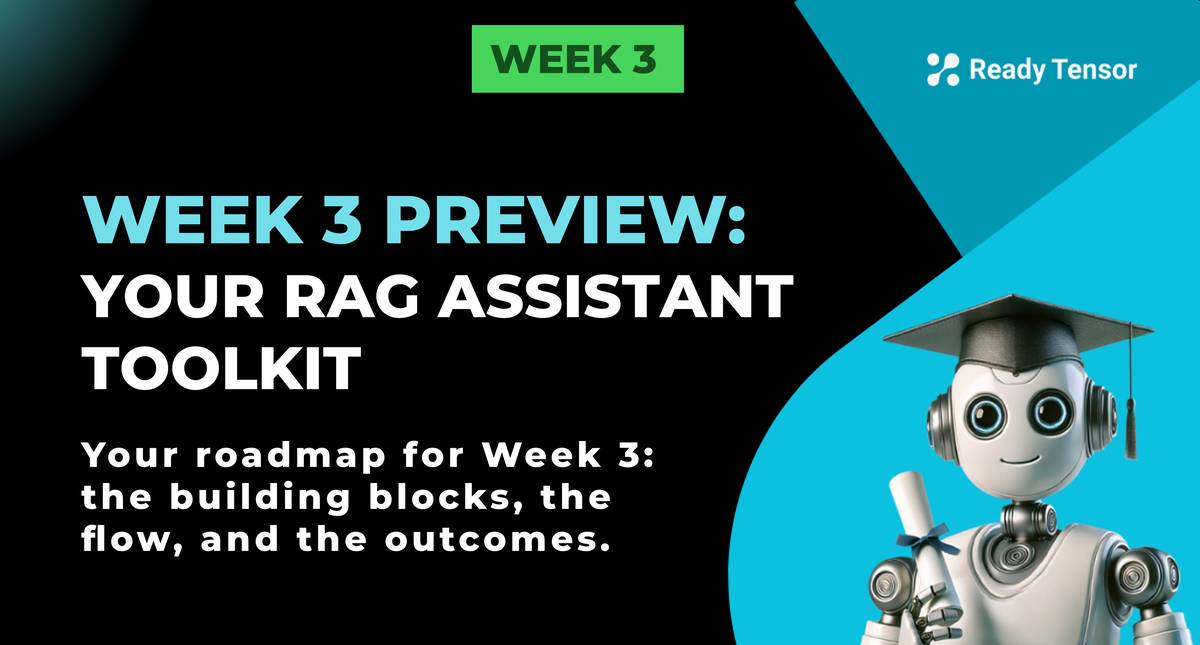Week 3 Preview: Your RAG Assistant Toolkit (AAIDC-Week3-Preview)
Table of contents

⬅️ Previous - Intro to RAG
➡️ Next - Your First LLM Calls
Week 3 Preview: Your RAG Assistant Toolkit
Welcome to Week 3! This week, we’re going to move beyond theory and start putting the pieces together.
📝 What’s in store this week?
You’ll learn how to:
✅ Make your first LLM calls and get comfortable with Groq and LangChain
✅ Use system prompts to shape your assistant’s style and responses
✅ Manage conversation memory for longer interactions
✅ Bring in retrieval to select the most relevant parts of a publication using vector databases like Chroma
✅ Keep your system safe, secure, and robust
✅ Explore best practices for optimizing and scaling your assistant
🛠️ Our running example
Throughout these lessons, we'll anchor our examples in a practical scenario:
Building an assistant that can answer questions about a research publication — think "What's the main contribution?" or "How does this methodology work?" or "Can you explain this result?"
We'll use a publication about Variational Autoencoders as our test case. This gives us rich technical content to work with and multiple types of questions to handle.
🧠 The progression
Here's how we'll build up your skills:
Lesson 1: Start simple — basic LLM calls
Lesson 2: Craft system prompts
Lesson 3a: Manage chat memory
Lesson 3b: Persist conversation memory
Lesson 4: Bring in a vector database and RAG to handle large knowledge bases
🚀 What you'll be able to build?
By the end of this week, you'll have a complete toolkit of essential techniques, best practices, and real-world patterns that you can use to build your own assistants for publication Q&A, customer support, or any domain you care about.
Let's get started!
⬅️ Previous - Intro to RAG
➡️ Next - Your First LLM Calls